An AI-driven Revolution in Healthcare
Transforming healthcare environments to harness the power of AI


Transforming healthcare environments to harness the power of AI

Artifiicial Intelligence is poised to transfiorm hospitals and healthcare fiacilities fiorever.
AI-enabled technology will eventually guide every interaction from admission to discharge. In the not-too-distant future, hospital operations will be more efficient and patient care more personalized than ever before.
In many areas, these changes are already underway, so we have identified the three areas where we believe AI will have the greatest impact – in patient care, operational efficiency and helping clinicians respond to changing cultural norms.
If healthcare providers are to take advantage of this revolution in care they will need to adapt quickly to new thinking in design and plan for the changes ahead.
To aid this process we have identified ten new spaces within healthcare environments that operators will need to consider if they are to truly hardness the power of AI.
With technological change happening at a pace never seen before, healthcare providers will need to move quickly if they are to be ready for this once-in-ageneration change.
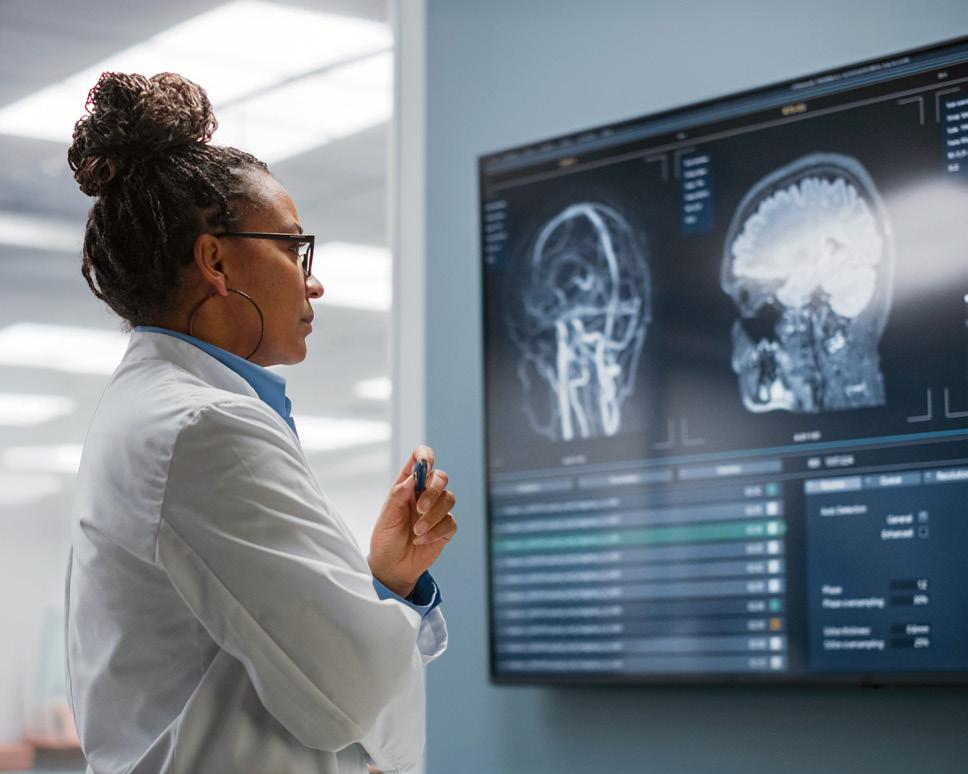

AI-powered technology for better patient care
A data-informed future for healthcare operations
AI-activated environments for a changing society
Ten spaces of tomorrow to prepare for today
Delivering AI-powered facilities with strategic planning and cost management
Medical equipment strategy for AI integration in healthcare
AI-enabled technology has enormous potential to improve the quality ofi human care.
In an age of staff shortages and time pressures, VR and AR will combine to create personally tailored experiences at the right time, guiding apprehensive patients through complex treatments, ensuring that every step taken is a step towards better health outcomes.
Healthcare providers and practitioners must prepare for a world where technology works hand-in-hand with the personal touch to make for an altogether better experience for those receiving care.
Below we discuss the four ways in which the technology is set to make a significant impact on patient experience.



When it comes to rehabilitation, virtual environments will tailor therapeutic exercises to meet the specifiic needs ofi the patient, providing personalized pain management and continuous virtual assistance.
Patients will find encouragement at every step, participate in virtual support groups, and adhere more closely to their therapeutic plans. This personalized, tech-driven approach transforms the rehabilitation process, ensuring better health outcomes and a more supportive recovery journey.
In pediatric hospitals, what to young patients can sometimes fieel like an isolating atmosphere will be replaced with immersive environments that distract firom discomfiort and times ofi loneliness.
A child confined to a hospital bed can be transported to a virtual playground, playing with friends or enjoying a virtual playdate.
This isn’t just about distraction. It’s about creating experiences that support mental and emotional well-being, making treatment more bearable and effective for young patients.

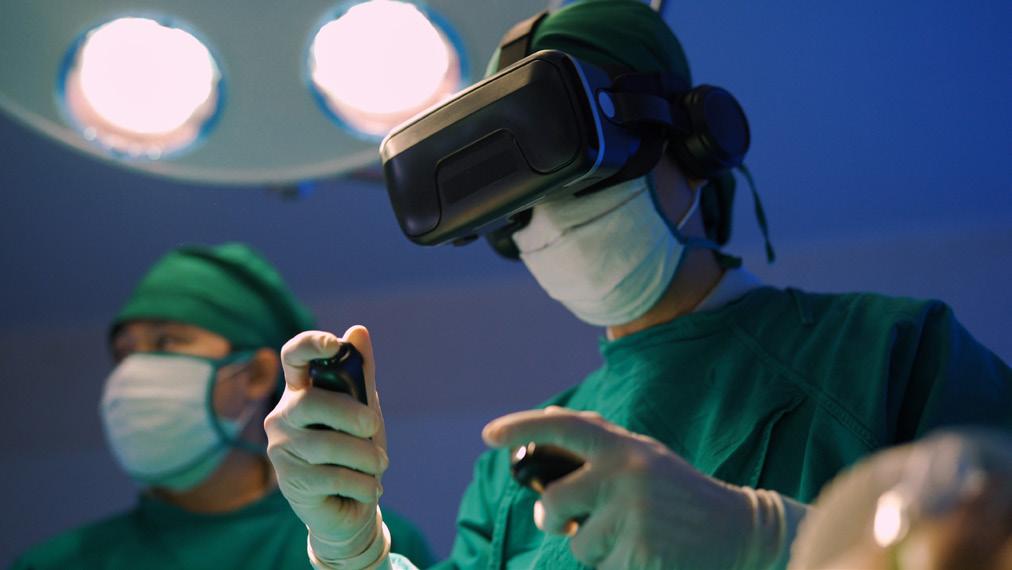
Providing immersive patient education tailored to the needs ofi specifiic groups – such as language, education level, socioeconomic background or cultural norms – has been shown to improve a patient’s likelihood ofi adhering to medical advice and drug regiments.
Here, AR will have a role to play in real-time translation or communication of complex clinical programs in a way that each patient can personally relate to.
AI is also ofi benefiit to the interactions between clinicians. Here, doctors and nurses can refiine their skills without the risk ofi patient harm.
Surgeons will practice intricate operations in virtual environments, honing their techniques and instantly exchanging insights with colleagues across the globe.
Remote surgeries will become routine, with expert surgeons virtually present in operating rooms potentially thousands of miles away, offering real-time guidance and support. This convergence of technology and expertise will not only elevate the quality of care but democratizes access to specialized surgical skills, breaking down geographic barriers.
The next generation ofi hospitals will see every interaction –firom admission to discharge and beyond – guided by the nuanced insights ofi artifiicial intelligence.
This is not just about efficiency. AI, when harnessed mindfully, will not only fully optimize hospital operations but also redefine patient care, making datadriven insights an essential cornerstone of designing and building modern healthcare facilities.
In some hospitals today, advanced technologies are not yet fully embedded into critical processes.
But what if every machine, every piece of software, and every person in a hospital were part of a team, each helping the other to be better?
There are three core areas where we envisage AI will improve processes and efficiencies in healthcare environments.




1. Creating seamless humanAI collaboration
A noticeable shift will occur towards more integrated systems.
Here, AI and healthcare professionals work together as true partners, enhancing decision-making with real-time insights and forming cohesive teams that contribute to better patient outcomes.
2. Redesigning ofi hospital healthcare processes
Hospitals will need to redesign their processes to incorporate AI firom the ground up, ensuring that technology and human staff fiorm a cohesive team.
This includes establishing a continuous feedback loop where AI and healthcare professionals learn and adapt from each other for ongoing improvement.
3. Driving greater operational predictability
Data-led predictability will allow fior the more accurate anticipation ofi patient needs, helping to optimize patient filow and ensure efficient resource use and timely care.
Leveraging this and pattern recognition for daily maintenance will enhance overall hospital efficiency and patient outcomes.
*AI-powered automatically guided vehicles (AGVs) will improve care support flow, meaning nurses and clinicians can focus on patients rather than lower-level tasks.
Like hospitals ofi today, the fiacilities ofi tomorrow will be a great deal more than just a building, or even a place ofi healing.
Healthcare facilities are highly social spaces defined by the complex rhythm of human behavior.
To successfully integrate AI into healthcare facilities, we must carefully consider how technology can complement and improve the running of these networks, ensuring that the human being is at the center of every decision.
It is a vision where every detail, from the smallest light switch to the largest data center, works in concert to provide an optimal experience for patients and staff alike.
Below we outline the three ways in which AI will assist in matching care to different cultural contexts.




To ensure that the social dynamics critical to the effective running ofi a healthcare system are enhanced by AI, every detail ofi health interactions and workfilows must be meticulously mapped out.
This is achieved through a deep understanding of how relationships are influenced by physical space.
To improve staff wellbeing and the patient experience, AI must be integrated to optimize workflows, manage patient data, and help clinicians predict patient needs with transparency and accuracy.
The result is improved operational efficiency, where the flow of activity is seamless, and every patient feels seen and attended to with minimal wait times and maximum care.
Each hospital is unique, defiined by local norms, values, and practices that both shape and are shaped by the surrounding environment.
Here, AI algorithms delve into patient data, examining the social determinants of health to craft personalized care plans. It is not just about numbers on a screen. Each patient’s social and genetic story helps clinicians to tailor healthcare plans, matching treatments to patients’ life circumstances and resources.
Targeted, preventative care will result in improved health outcomes and heightened patient satisfaction, while patients genuinely feel their cultural identities are respected and integrated into their care.
By mapping out how environments either fiacilitate or hinder communication and connection, we can uncover critical insights that can improve the experience ofi being in the healthcare system fior both clinicians and patients.
AI steps in as a powerful ally, assisting clinicians in the review of health data and prompting earlier, more accurate diagnoses.
This synergy leads to enhanced diagnostics, filling in care gaps, and maximizing in-person provider-patient interactions for compassionate social-emotional care.
Ten spaces of tomorrow to prepare for today
With AI and data-driven technologies set to define healthcare for generations to come, there are ten areas of the facilities that operators may need to consider if they are to truly harness the power of AI.

Private and communal areas need to respect patient privacy while encouraging social support.
Room layouts must be flexible enough to accommodate different cultural practices and family structures.
Here, AI and AR combine to personalize room settings, such as color, lighting and acoustics to strategically enhance the therapeutic environment. AI can monitor environmental conditions and adjust them in real-time for optimal healing to suit the specific needs of each individual patient.

Spaces should promote a sense ofi cultural safiety. This could include spaces fior spiritual practices and culturally specifiic needs, such as prayer rooms or areas fior traditional healing practices.
Here, signage and wayfinding systems that are inclusive and accessible to diverse populations are crucial. This includes incorporating AI-enabled screens to translate for those who do not speak the local language, helping them to navigate the hospital.

Healthcare fiacilities will evolve to meet the rapid advances in nanotechnology, genomics, and immunotherapy.
To enable this change, new departments may emerge, likely becoming integrated versions of facilities we already know – one such concept could be the ‘nanomacy’.
A hybrid department not seen before, this potential concept could be part patient care, part clinical lab, part research lab, and part tech center, all in support of increasingly personalized medicine.
An expansion of the traditional pharmacy, AI could leverage crossdisciplinary data to develop and deliver drug regimens that match the needs of individual patients.

An AI-driven HVAC system is a pivotal decision maker.
By analyzing real-time data – weather conditions, occupancy rates, medical needs, and even individual room preferences – it carefully orchestrates the hospital’s environment. It lowers the temperature in unoccupied rooms, ramps up airflow in crowded areas, and dynamically adjusts settings to minimize energy consumption.
This AI system influences not only the physical comfort of patients and staff but also operational efficiency, and lowers energy consumption.

AI-driven algorithms can analyze real-time data, fiorecast patient admissions, and allocate resources adeptly.
During flu season, AI might anticipate a surge, prompting adjustments such as opening additional wards or increasing nursing staff preemptively.
This requires hospital designs that can flexibly accommodate temporary capacity increases, a concept that redefines how we think about space.

Universal patient rooms at the OU Health University of Oklahoma Medical Center. Spaces are designed to accommodate equipment for patients at all levels of need. During a surge or other emergency, entire wings can be converted to high-acuity rooms, and independent HVAC systems on the hospital’s top floor allow it to be used as an epidemic or isolation area.
Facilities must be designed with fiuture readiness in mind. This means hyper- filexible, multifiunctional areas that redefiine and reimagine what a hospital is fior.
With diagnostics taking up a sizeable footprint in many hospitals, better, more rapid diagnoses from AI pattern recognition will mean much of this space may no longer be required for its intended purpose.
These spaces could accommodate community-based outreach programs, or provide essential preventative care services such as food banks, baby needs and exercise facilities.

Within hospitals, a dedicated area should be equipped with advanced computing power and high-resolution displays.
This is about creating an environment where technology enhances the medical experience.
The command center is essential to the connectivity and seamless operation of a high-tech hospital system - one where specialized care is powered by VR/AR, surgeries can be performed remotely, and technologies such as drones supplement support services.

Children’s Healthcare of Atlanta, USA
Introba worked to deliver a technologically-enabled facility that offers transformative care for patients and the community
In an AI-powered fiacility, the extensive requirement fior data necessitates on-site centers with the power and capacity fior high-speed networks.
These hubs are the backbone of the modern hospital – so much so that they will compete with MEP systems as the space king of healthcare infrastructure –enabling real-time data processing and updates that keep systems responsive and effective.
In these spaces, every bit of information flows smoothly, supporting everything from AI-driven diagnostic tools to patient monitoring systems, ensuring that care is always precise and timely.

As AI improves the overall patient experience, as well as the speed and accuracy ofi pattern recognition, diagnostic and imaging departments may require less space.
In its place will be flexible, modular, technologically-enabled environments that shift to accommodate a variety of needs, and AR technology will personalize the patient experience throughout.

on current needs
AI-powered digital twins can monitor the health ofi critical hospital infirastructure – such as medical equipment, HVAC systems and elevators.
By analyzing data from sensors and routine checks it can predict when maintenance is needed.
This proactive approach extends the lifespan of expensive equipment and ensures that facilities are always operational when needed, dramatically improving operational efficiency while minimizing energy use.


Helen Pickering Director
Currie & Brown
As AI becomes increasingly integrated into healthcare environments, construction projects must be carefiully managed to align with the technological demands ofi healthcare organizations.
Effective strategic planning alongside robust cost management and project management are vital in aligning facility design and development with the ongoing adoption of AI.
Consideration must be given to several factors to ensure that the infrastructure, operations, and financial management can support the integration of new technologies.

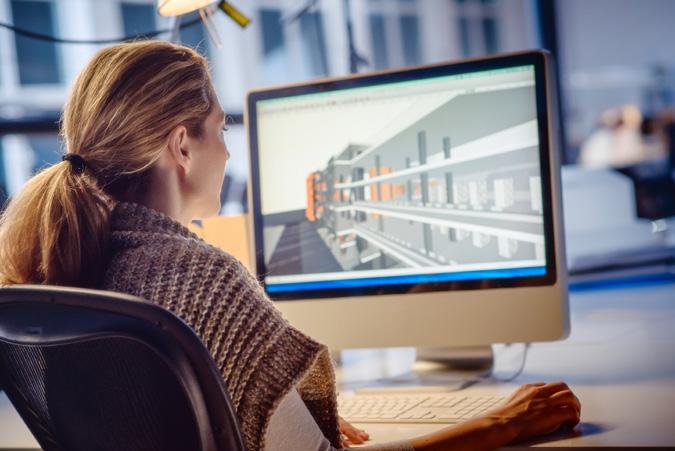
Creating robust and scalable infirastructure capable ofi supporting advanced technologies can be a challenge in existing fiacilities due to space constraints.
This requires careful planning and implementation of project controls. Managing the budgeting, allocation, and monitoring of financial resources to keep AI-related projects within budget, as well as meeting all technical, regulatory, and operational requirements. This is core to what Currie & Brown provide in healthcare facilities worldwide.
AI tools that predict bottlenecks, optimize resource utilization, and suggest the most efficient care pathways will mean fiacilities must adapt their layouts.
Through careful collaboration with healthcare planners and architects, spaces should be delivered in support of current needs and future technological advances without unnecessary delays or cost overruns.
Currie & Brown are currently supporting the development of Monklands Hospital in Scotland which will be the UK’s first fully digital hospital.
Here, AI is central to the design development process. Our teams are ensuring flexible spaces will support delivery of future technological advancements within budget limitations.




4. Regulatory Compliance and Security
5. Integrating AI into Clinical Workfilows in
AI-powered digital twins enable ongoing monitoring ofi fiacility perfiormance, and allow fior the simulation ofi fiuture changes or upgrades.
Whilst potentially costly up front, it is possible to realize the return on investment throughout the design, construction and operational stages, and through various alternate tooling and management options.
If their implementation is to be successful, it is vital that healthcare organizations prioritize investments that achieve greatest ROI and apply robust budgetary control and effective project management.
Healthcare organizations must comply with regulations like HIPAA and GDPR, especially when dealing with AI systems that process sensitive patient data.
This requires secure physical spaces for servers, controlled access areas, and compliance with industry-specific standards.
Integrating security and regulatory requirements from the start will help to ensure that construction budgets cover the necessary upgrades without excess spending or delays.
AI tools need to be seamlessly integrated into healthcare workfilows, firom diagnostics to treatment, and not just in new fiacility design.
Minimal disruption to patient care during AI system installations is paramount. This requires detailed alignment of construction schedules with operational needs and a holistic change management plan.
Effective communication and comprehensive staff training are essential to ensure smooth transitions, addressing staff concerns and adapting workflows to integrate new technologies.

Gary Hamilton Growth Leader Introba
With the widespread use of AI in healthcare on the horizon, readying facilities for the future has never been more complex. Medical equipment planners can play a vital role in helping to navigate this period of transition.

Lutheran Medical Center Replacement Hospital, Indianapolis, USA
Introba provided medical equipment planning, procurement and installation support to a facility that prioritzes patient care through cutting-edge technology
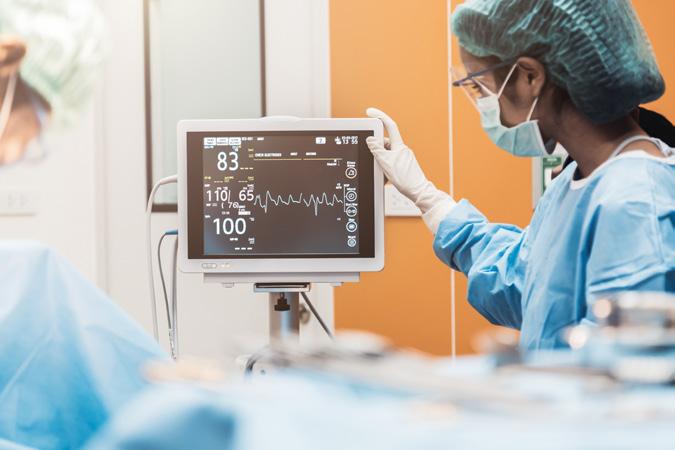


1. Taking a long-term planning perspective
A deep understanding ofi the infirastructure needed to support AI can minimize fiuture disruptions and costs.
MEQ planning can also assist hospitals in balancing costs and benefits. Does it make sense to install a medication compounding robot in your pharmacy when the nascent technology still requires extensive human oversight? Is it worth spending several hundred dollars during construction on plugs that could support a surgical robot, when tearing out an OR wall to install them later could cost thousands? Is it better to lease or buy AI-enabled equipment, given it may be rendered obsolete in just a few years?
Carefully considering these trade-offs will be vital to financially sustainable AI integration.
2. Maximizing filexibility, minimizing fiootprint
Navigating the interplay between technology, cost, and institutional needs will also be essential to the spatial design ofi medical fiacilities.
Hospitals will often build out the shell of additional floors in anticipation of future growth, only outfitting them when they are needed. Having these shells ready for rapid completion is vital; since hospitals typically run at close to full capacity, even modest increases in demand can overtax operational floors, necessitating bringing more space online quickly.
MEQ planning can help ensure these spaces have infrastructure, like reinforced floors capable of supporting heavy robots, already prepared for AIintegrated technology.
3. Customizing approach to fit a fiacility’s needs
While AI will transfiorm different healthcare fiacilities in different ways, hospitals will need to make complex choices about acquiring equipment like smart beds, whose cost can range signifiicantly.
With equipment increasingly already wired for AI, many of the questions institutions face are not of hardware, but software - and when to upgrade to greater AI capabilities. Making these decisions requires asking bigger-picture questions around financing, growth goals, and care objectives. Some facilities may never need certain types of equipment; others may want to implement the most cutting-edge items available.
MEQ advisory maximizes the value of AI adoption for hospitals by offering a framework for them to think through these issues.
As societies and the people within them continue to change, our healthcare systems must evolve with them. Central to this is improving access to all.
Healthcare systems are under growing pressure, and providers across the world face simultaneously managing the need to increase access to quality care while navigating new, disruptive technologies, staying financially viable and minimizing their impact on the planet.
Our approach is deeply rooted in systems-based thinking. By working across the entire spectrum of care delivery, we understand what it takes to design and shape high-tech, comfortable, complex environments that improve the patient and family experience while also reducing the impact on the environment.
We advocate and design for the patient, their loved ones and the practitioner –resulting in adaptable, digitally advanced spaces that improve patient outcomes. The healthcare environment continuum is more connected – physically and digitally – than ever before.
Our ‘whole-system’ approach helps health providers navigate their complex networks and systems – and transform everything from designing for climate resilience to systems engineering and medical equipment planning.
Our impact
No9
Top 225 International Design Firms for 2024 (ENR)
60%
Of UK NHS Trusts and Boards have partnered with Currie & Brown in the last 5 years
95%
Sidara have worked with almost all of the Top 20 US Hospitals and 10 of Top 13 US Healthcare Systems
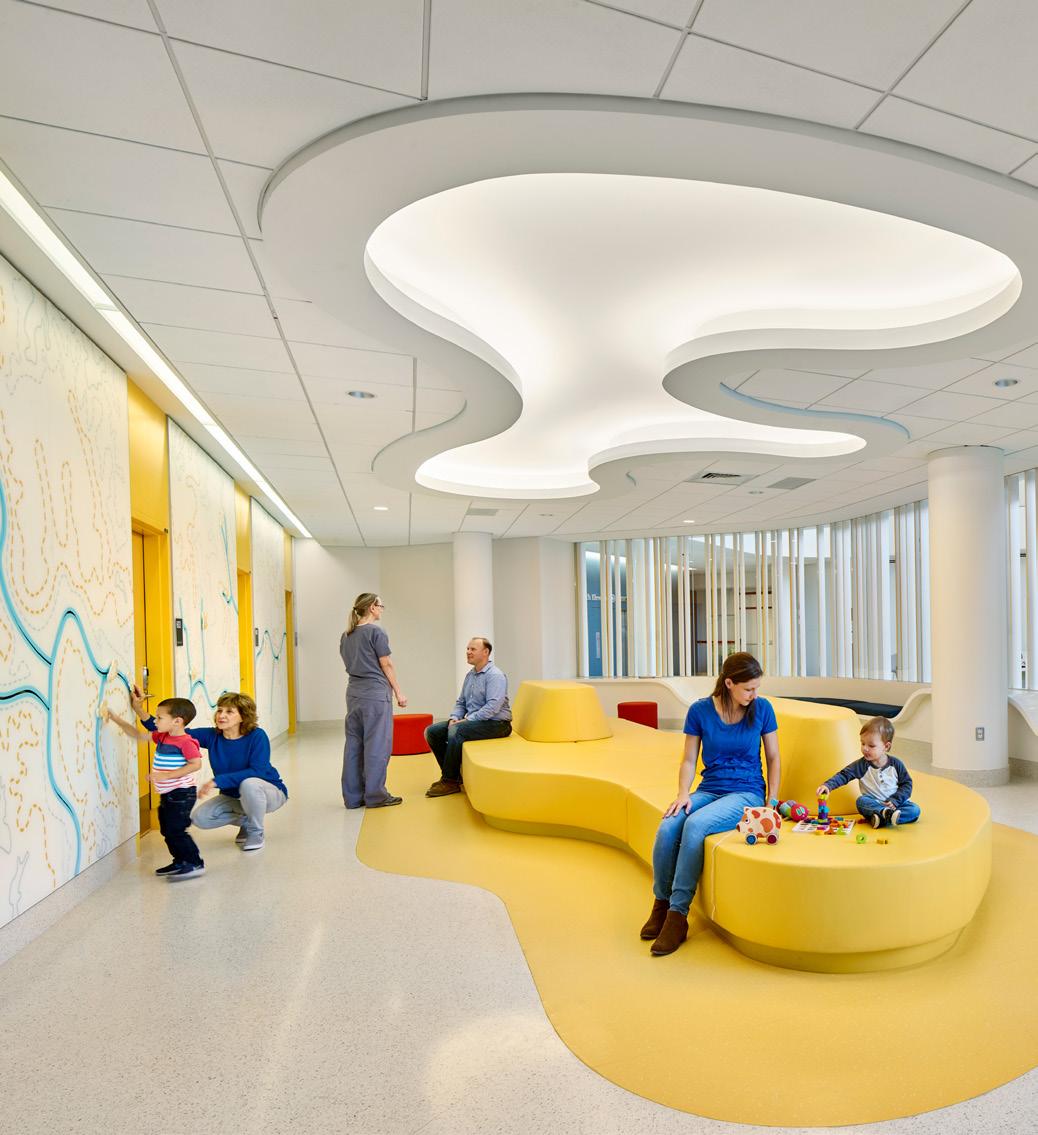
University of Virginia, University Hospital, Charlottesville, Virginia, USA
Architectural Design
– Design and Architecture
– Interiors
– Landscape Architecture Design
– Façade Engineering
– Building Information Modelling
Advisory and Planning
– Business Case
– Cost Benefit Appraisals
– Digital Strategy
– Estate Strategy
– Green Plans and Sustainability Strategy
– Healthcare Planning
– Net Zero Carbon Strategy
– Program & Project Management
– Market Strategies Planning
– Hospital Commissioning/Move Management
– Commissioning
– Materials Management/Logistics

– Emergency Helicopter Transportation Planning
– Functional Programming/Schedule of Accommodation (SOA) and Health Planning
– Site Planning, Master Planning, and Urban Design
– Health & Wellness Consulting
– Sustainable Buildings Design and Certification
– Decarbonization & Resiliency Strategies
– F&B and Laundry Programming, Planning, and Equipment Planning Services
– Project and Construction Management
– Site Supervision during Construction and Defects Liability Period
– Smart and Digital Technology – Digital Twin
– Transportation and Roads, Parking Studies and Design
Medical Equipment Planning
– Medical and Laboratory Equipment Planning
– Medical Equipment Planning
– Medical Equipment Procurement
– Medical Equipment Installation Management
– Acoustics
– Audiovisual
– Digital Transformation
– Fire Protection
– Information Technology and Technology Infrastructure
– Mechanical, Electrical & Plumbing Engineering (MEP)
– Network and Communications
– Smart Technology
– Structural Engineering
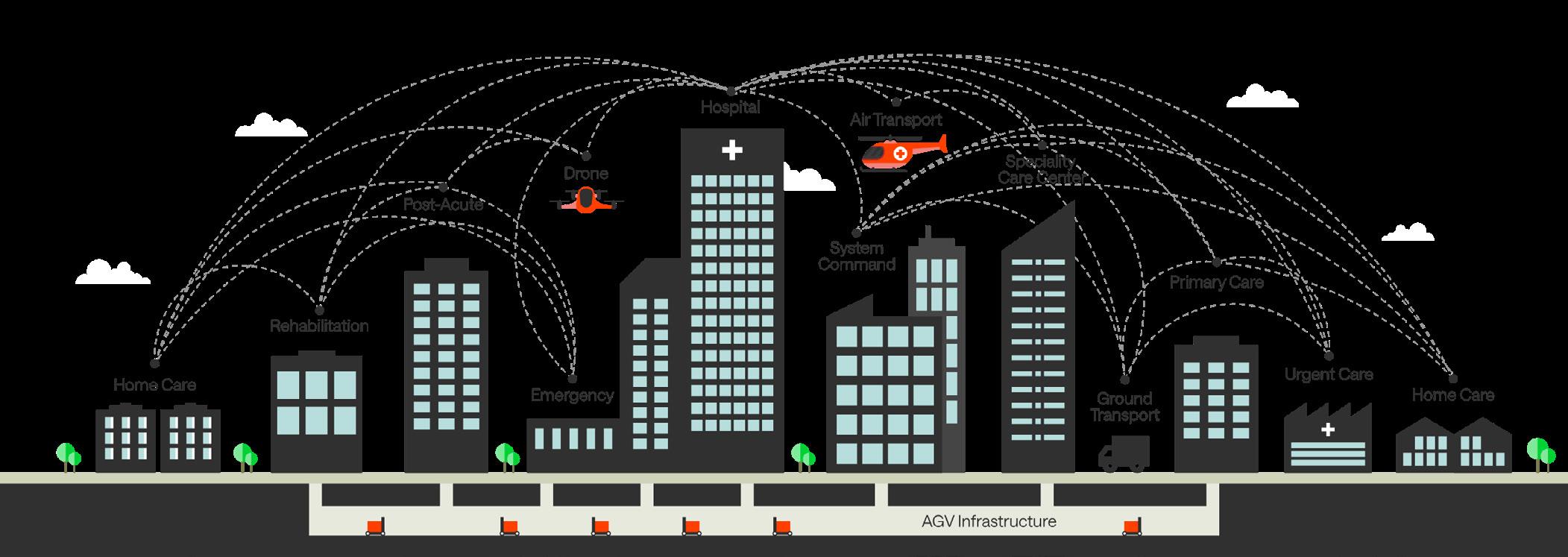

Ashley Dias
Perkins&Will
Director of Healthcare Strategies ashley.dias@perkinswill.com


Gary Hamilton
Introba SVP Growth gary.hamilton@introba.com
Currie & Brown Senior Director helen.pickering@curriebrown.com

Helen Pickering Dr. Yaya Ren
PreeMe+You
Medical Anthropologist – AI-human interactions in healthcare yaya@preemeandyou.com